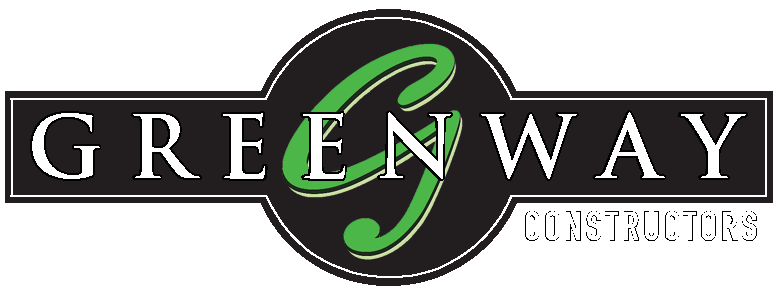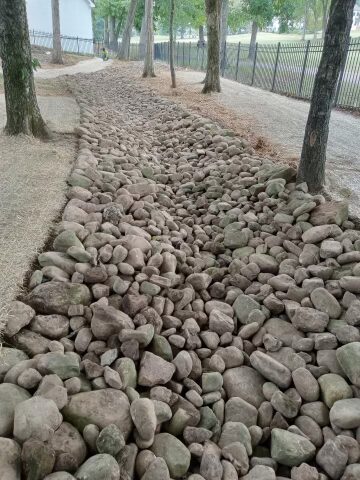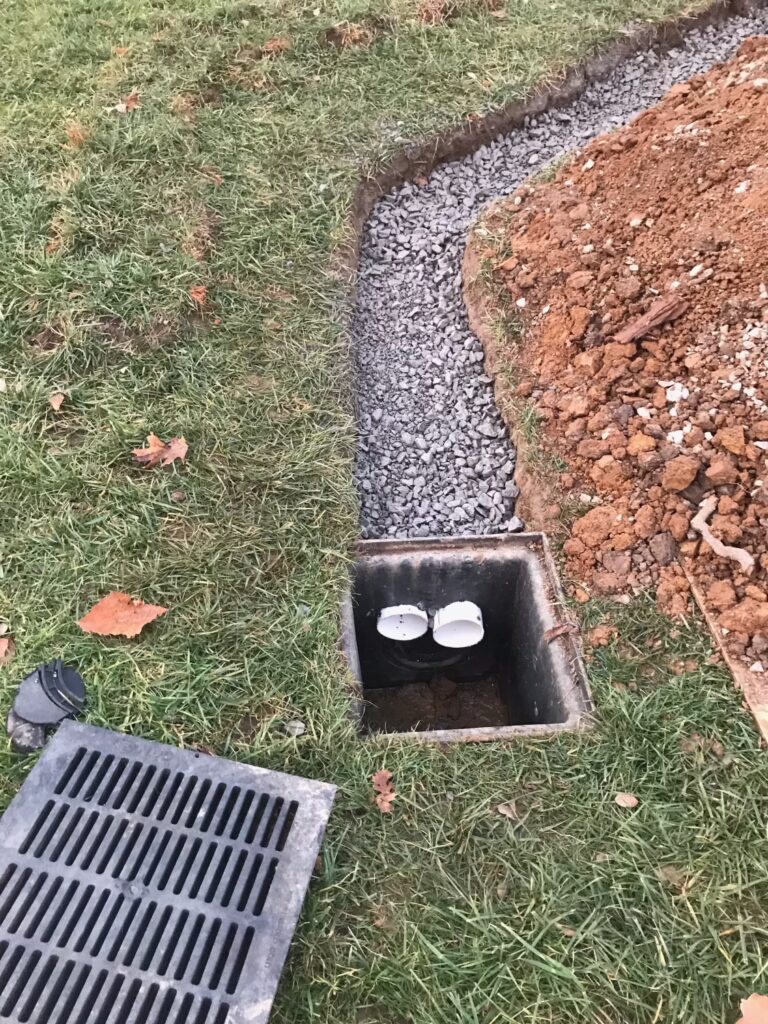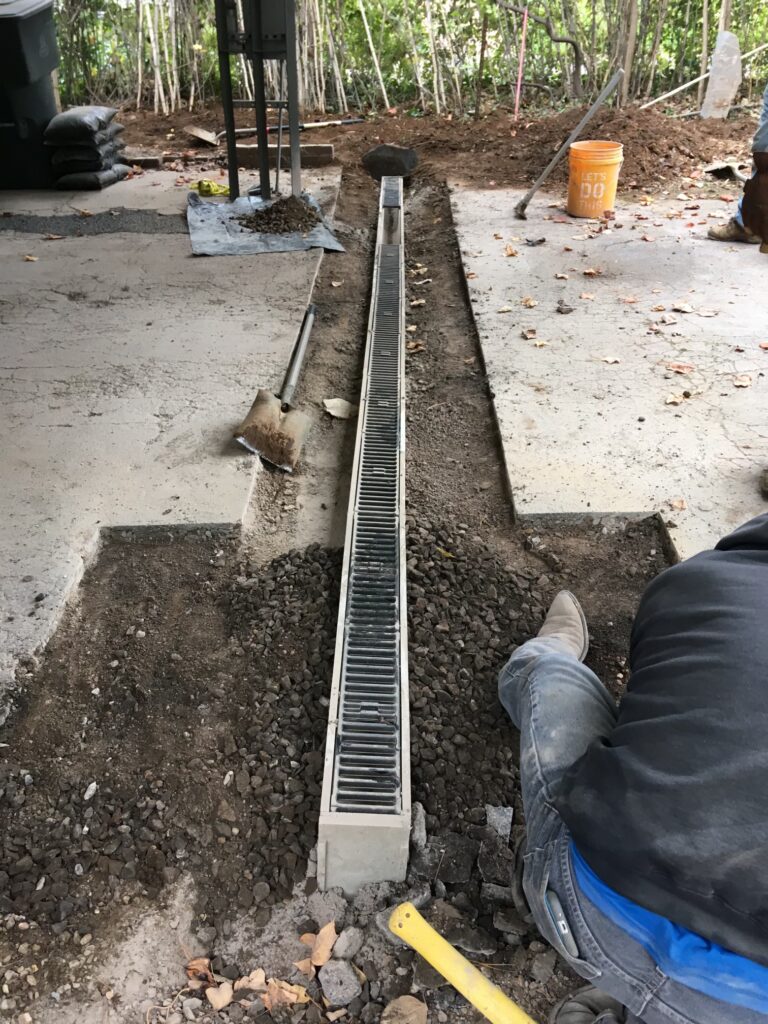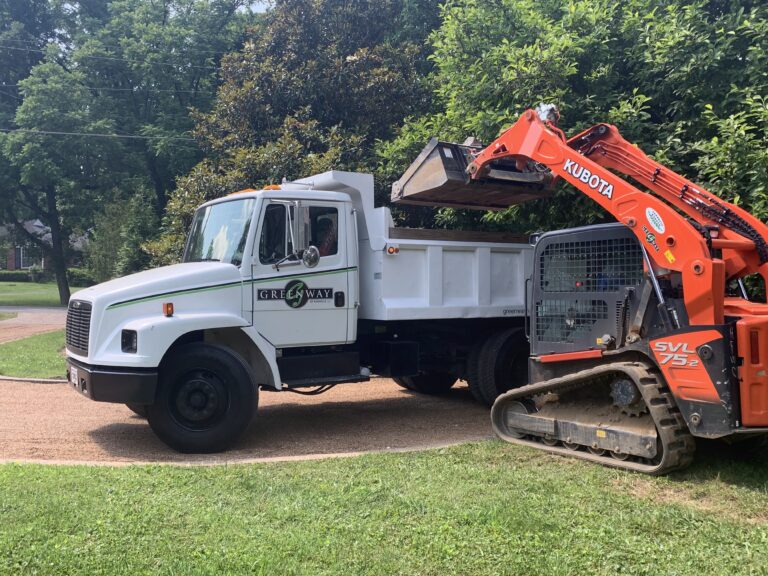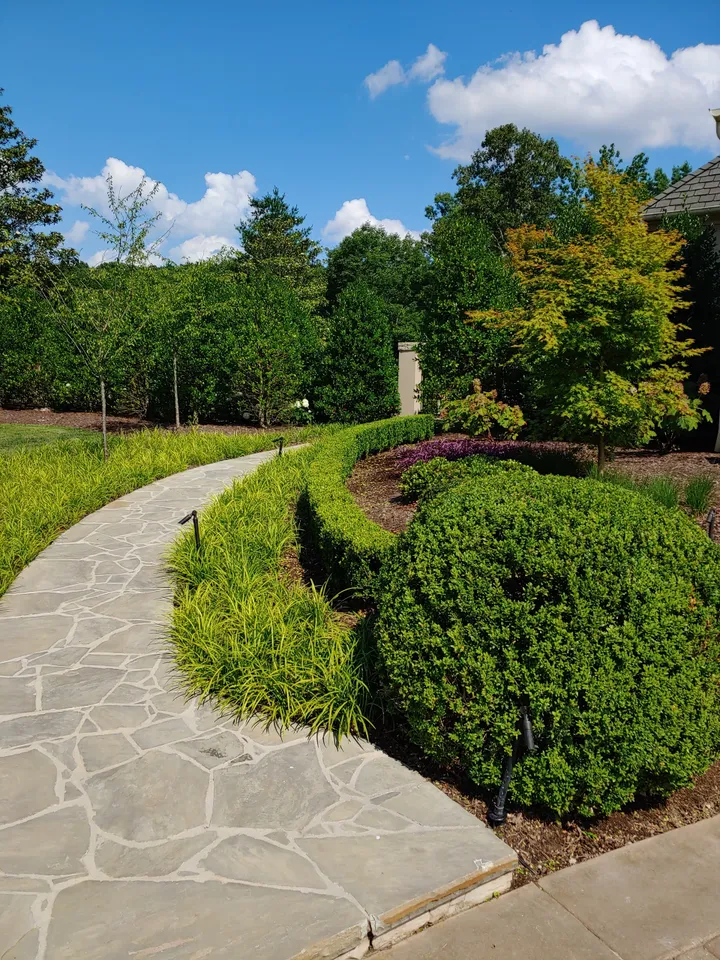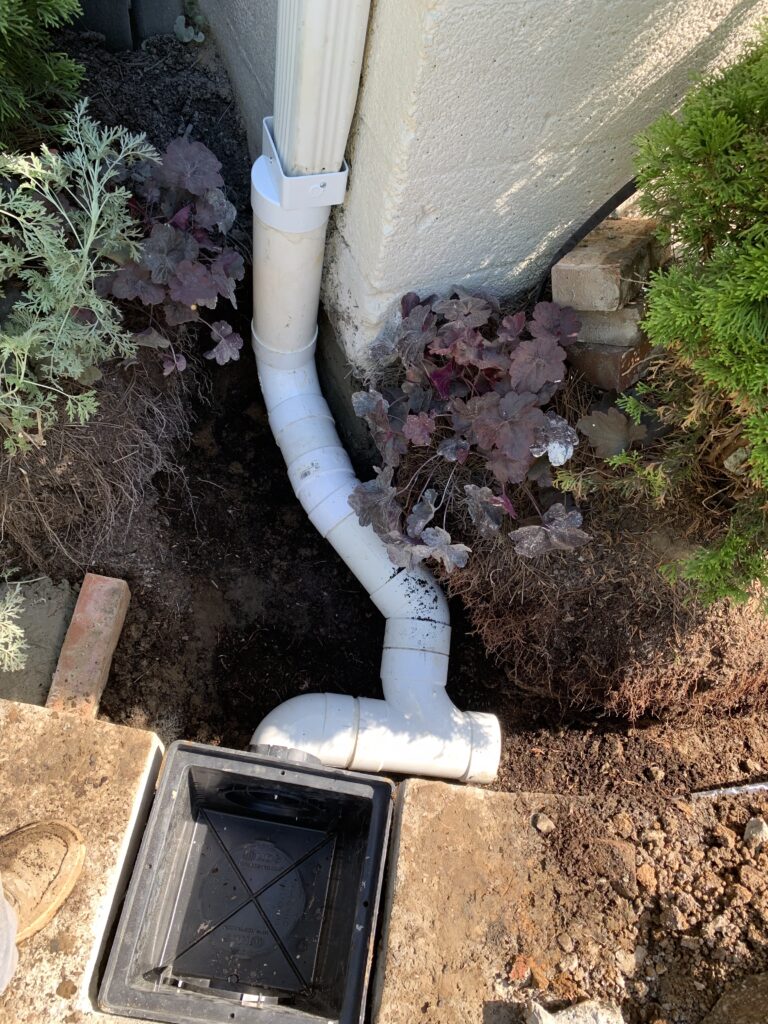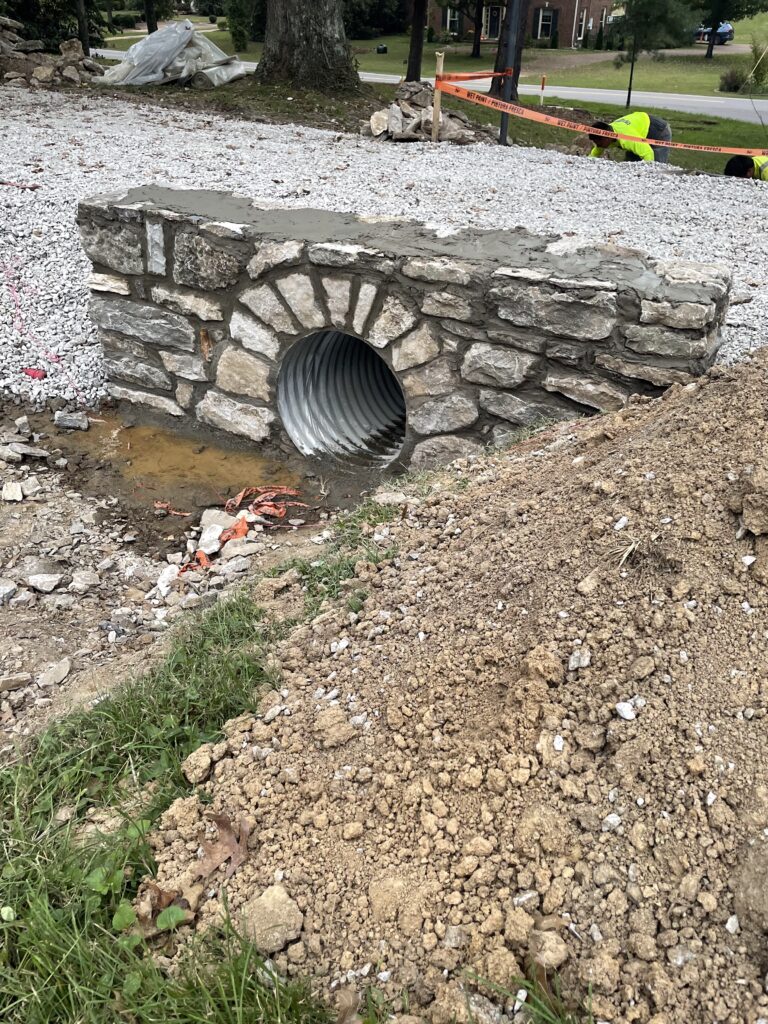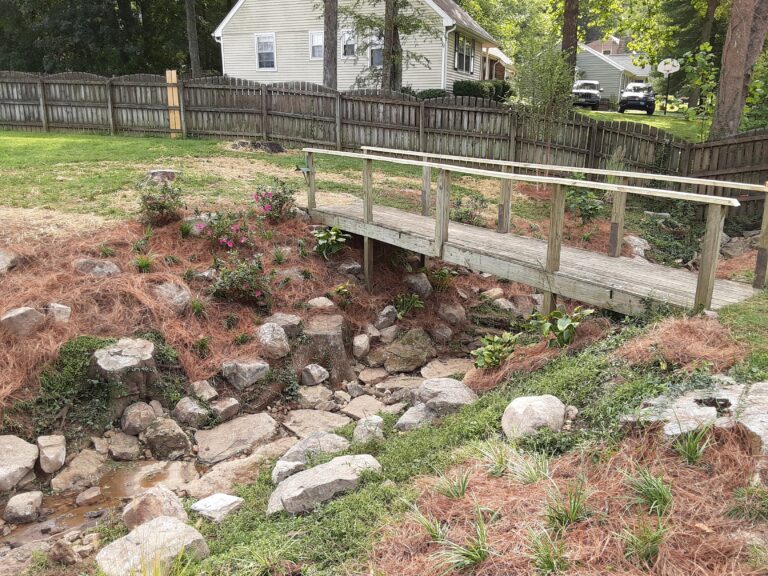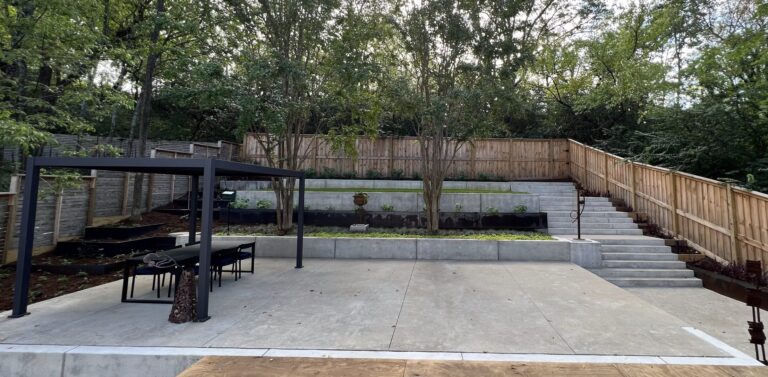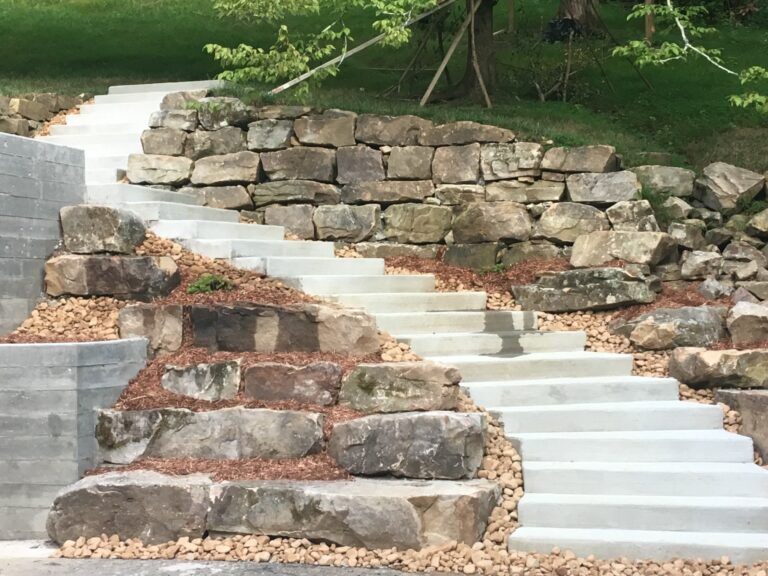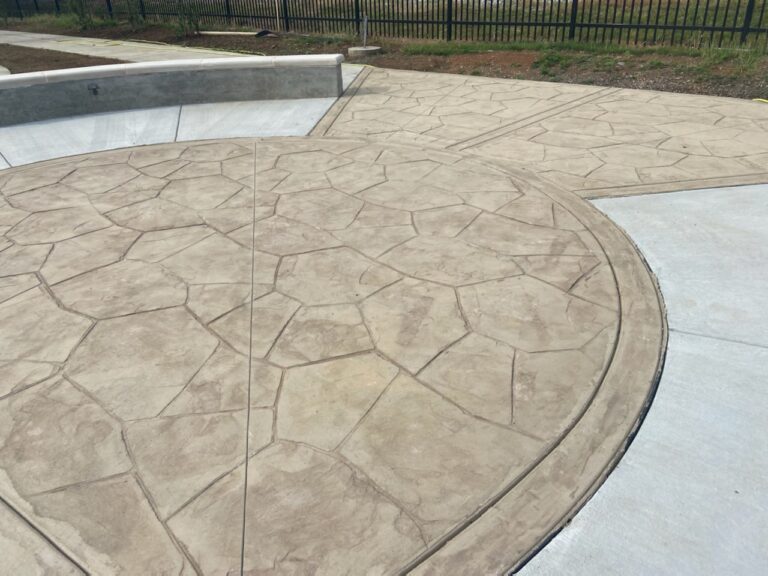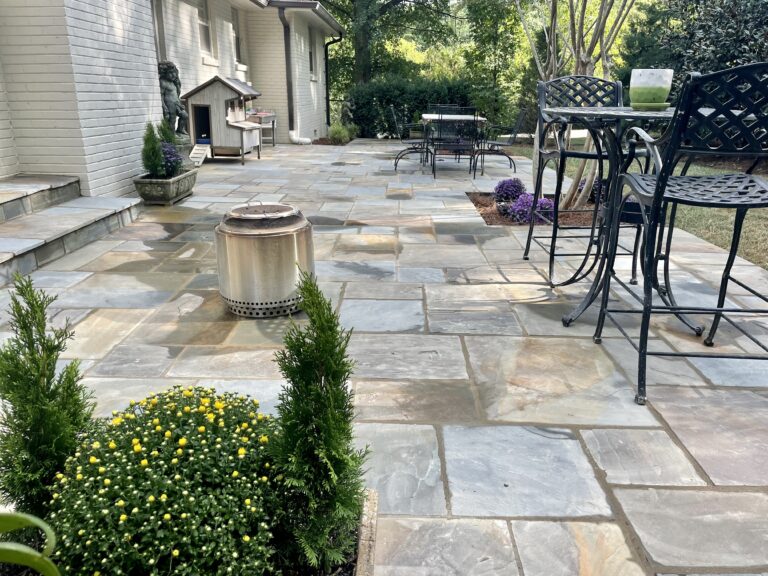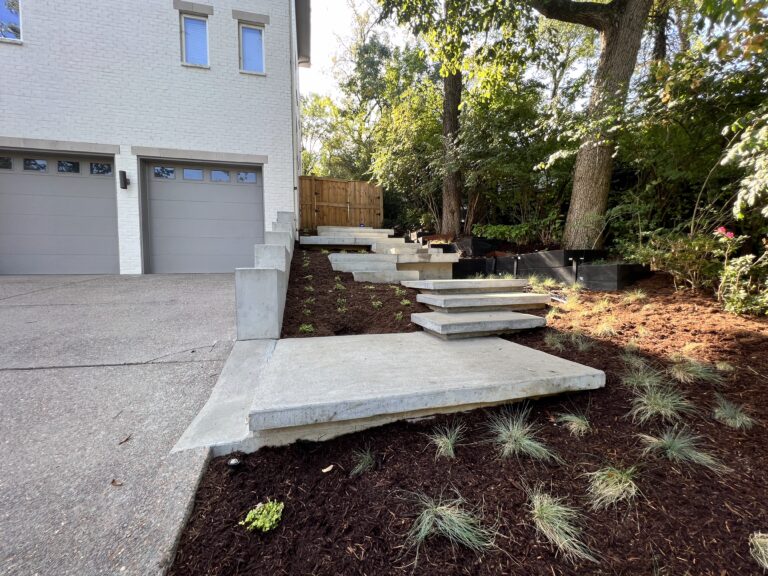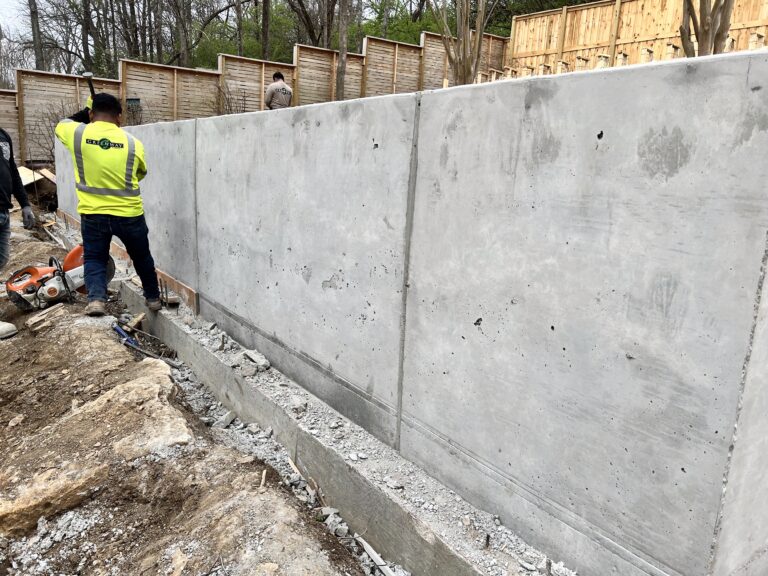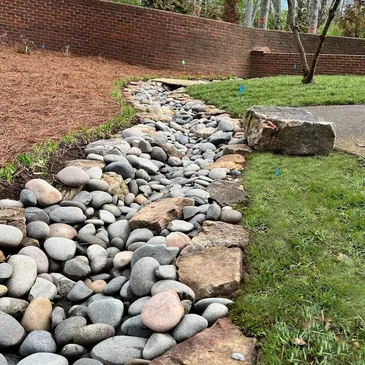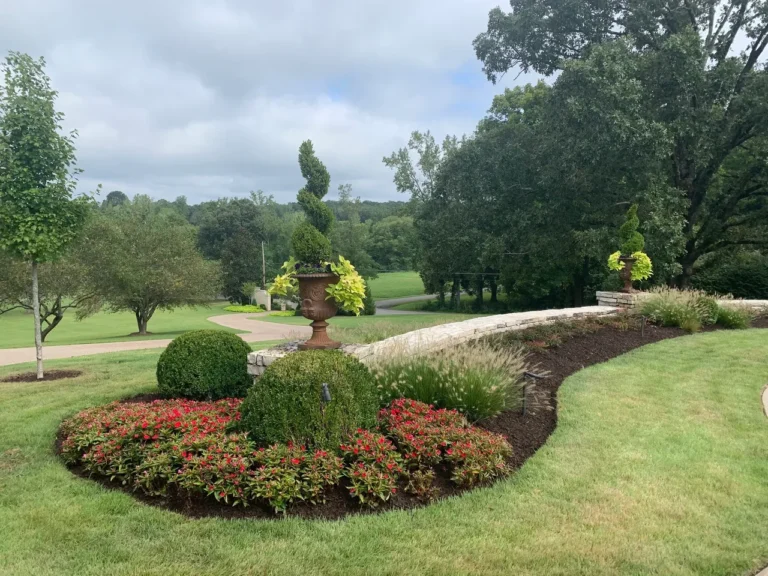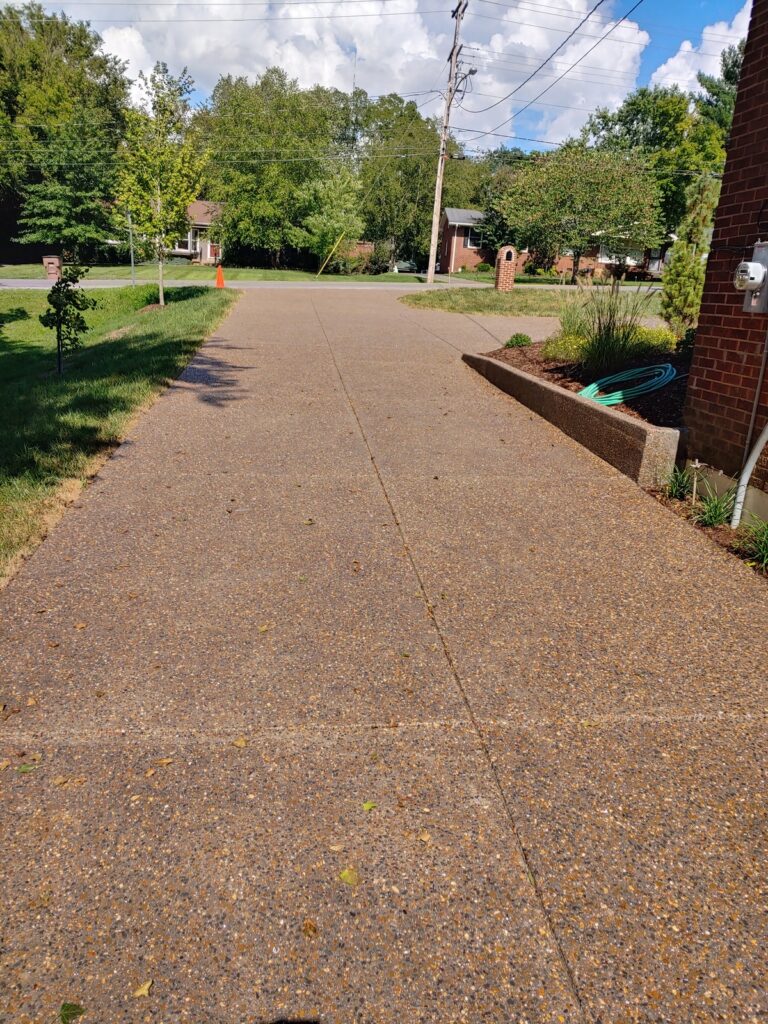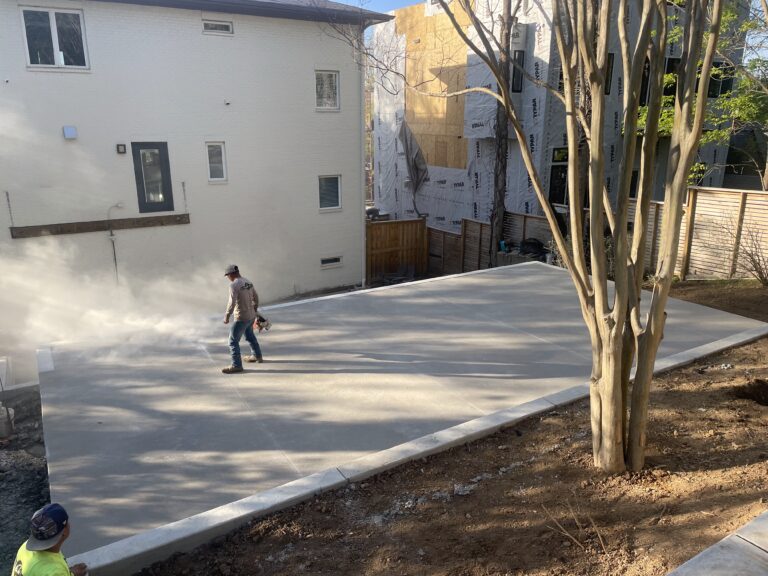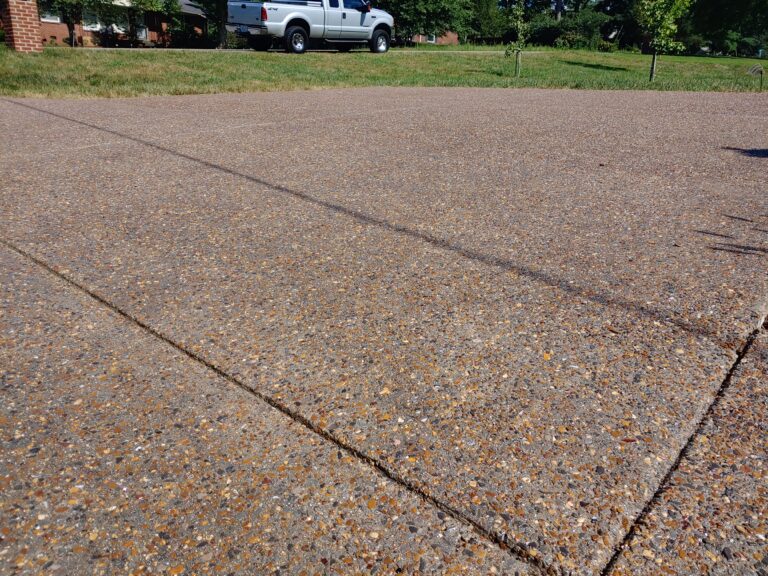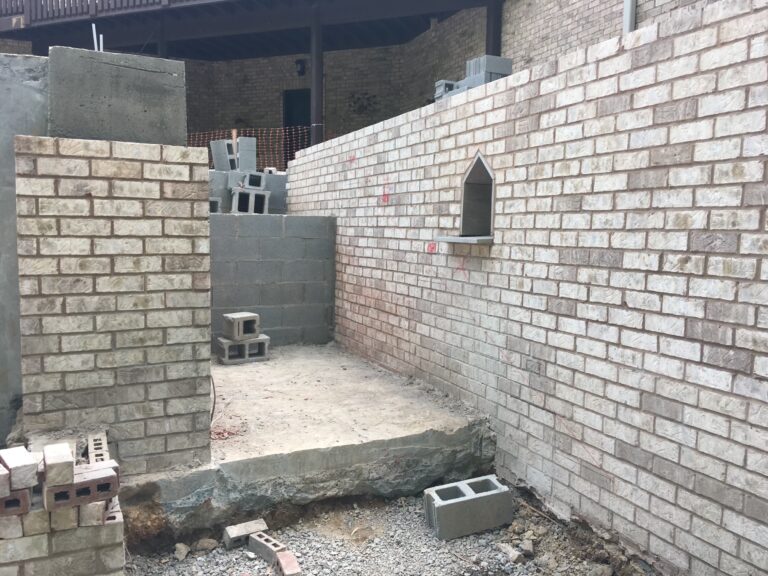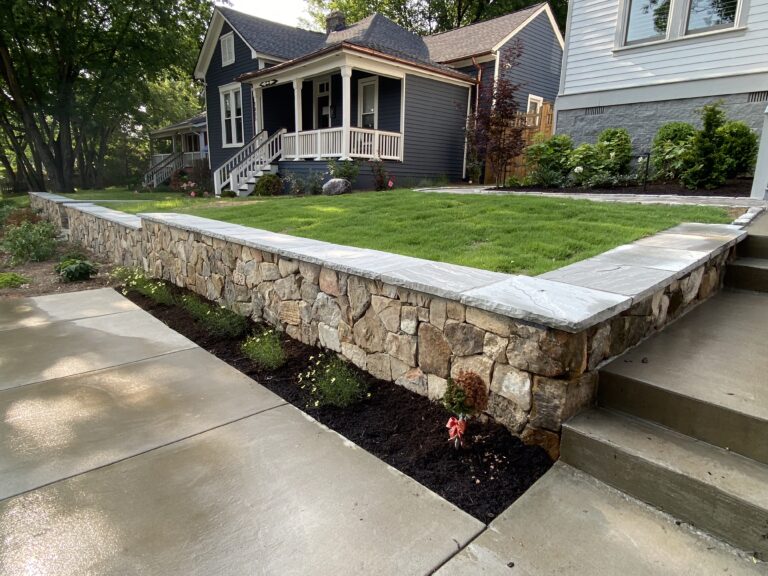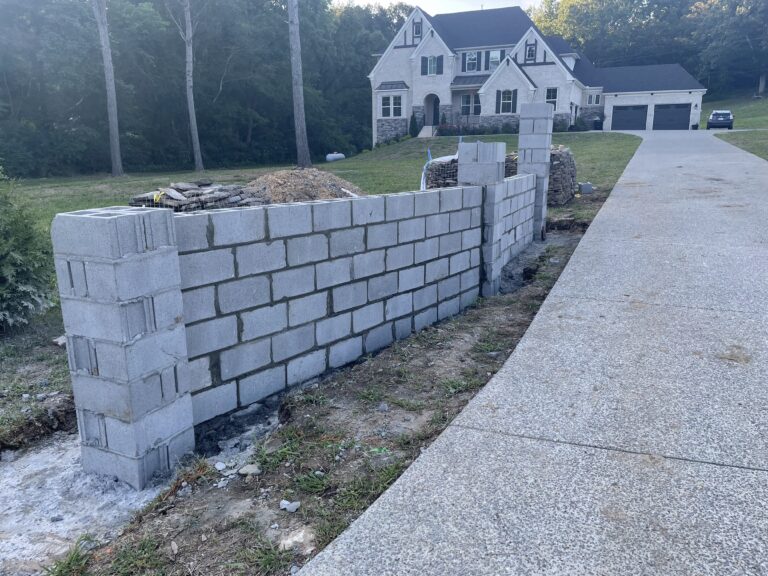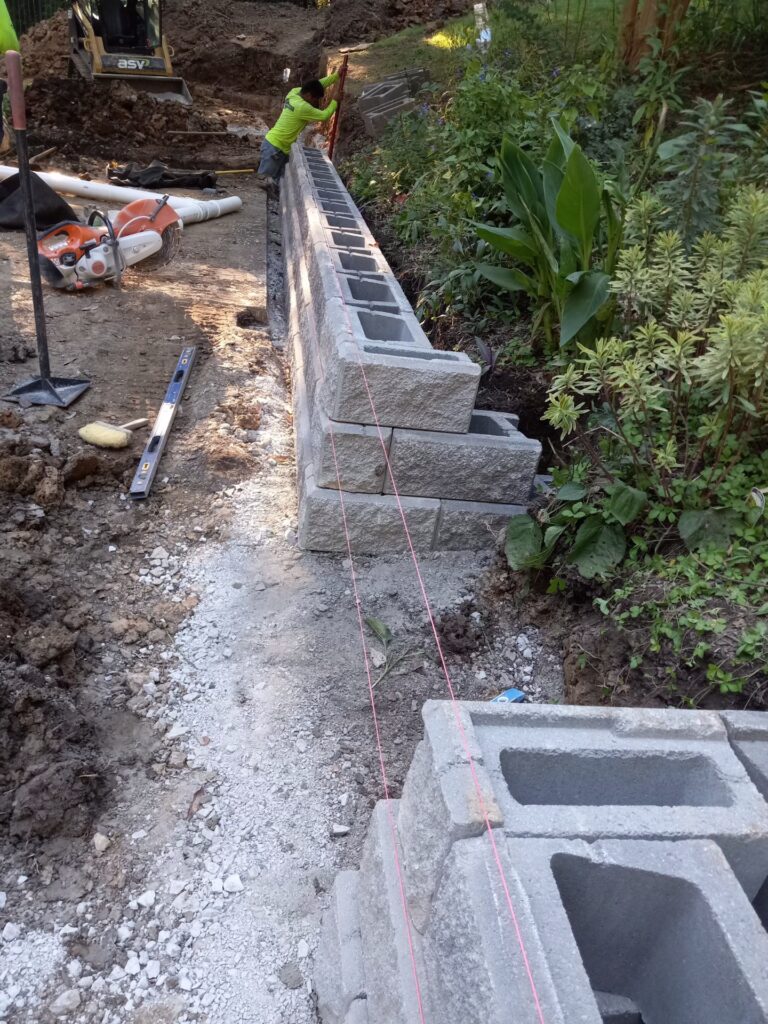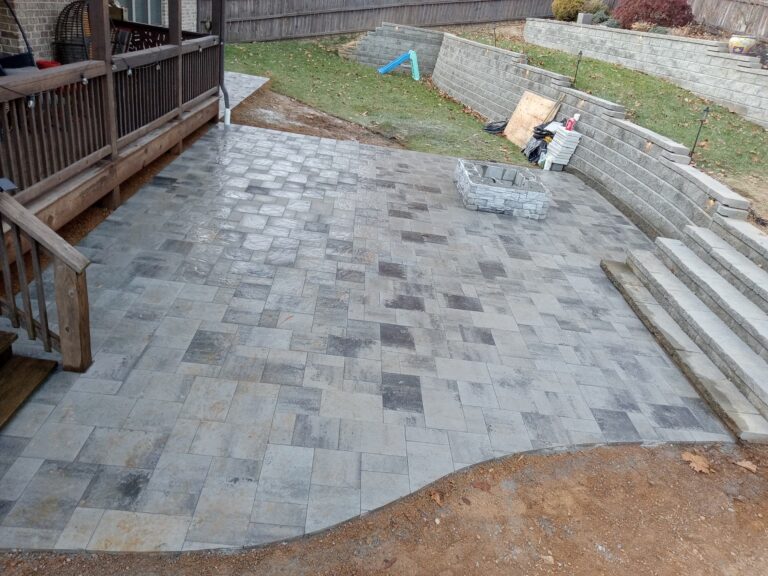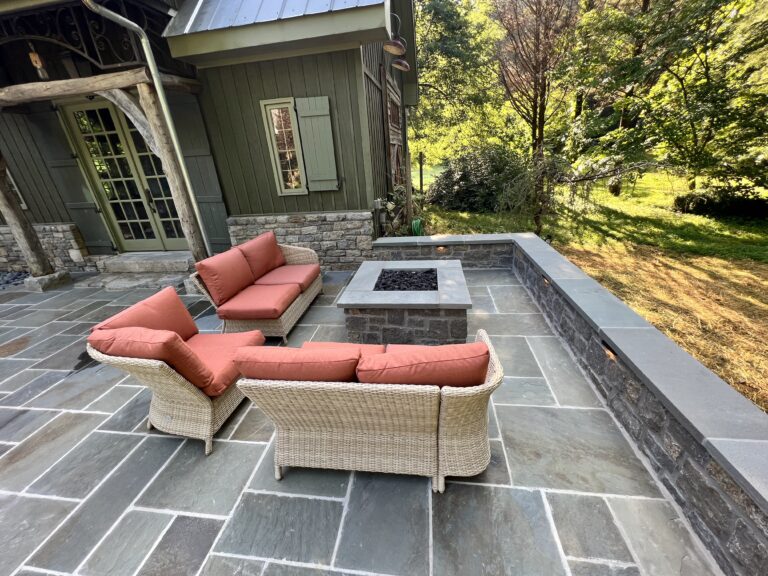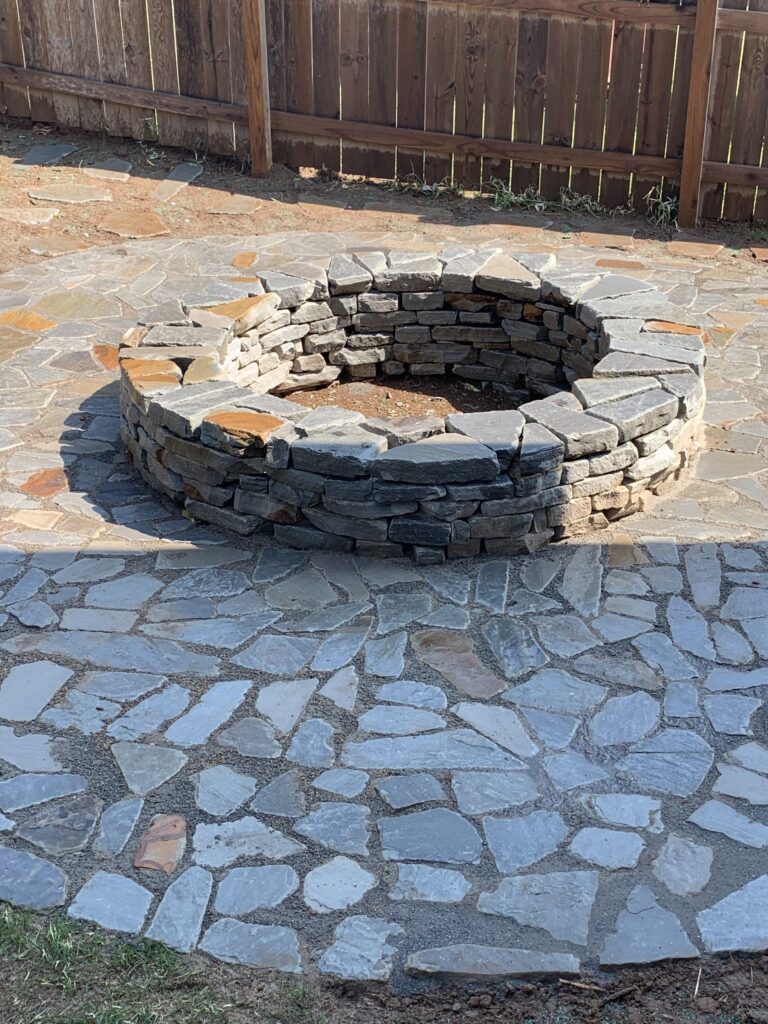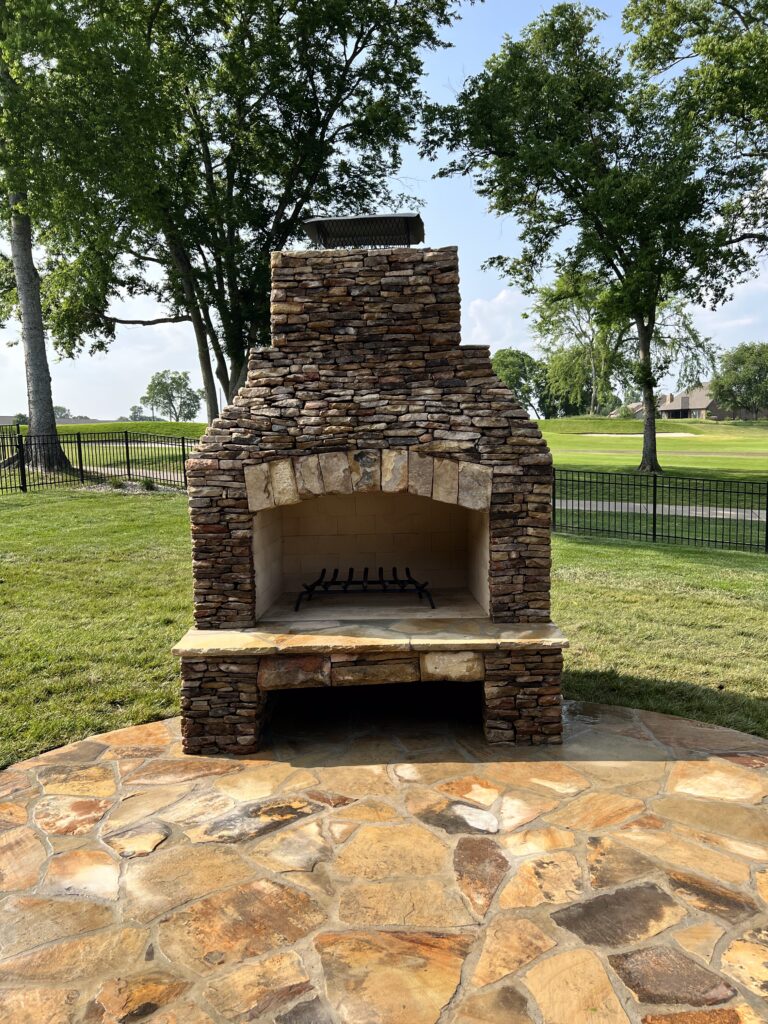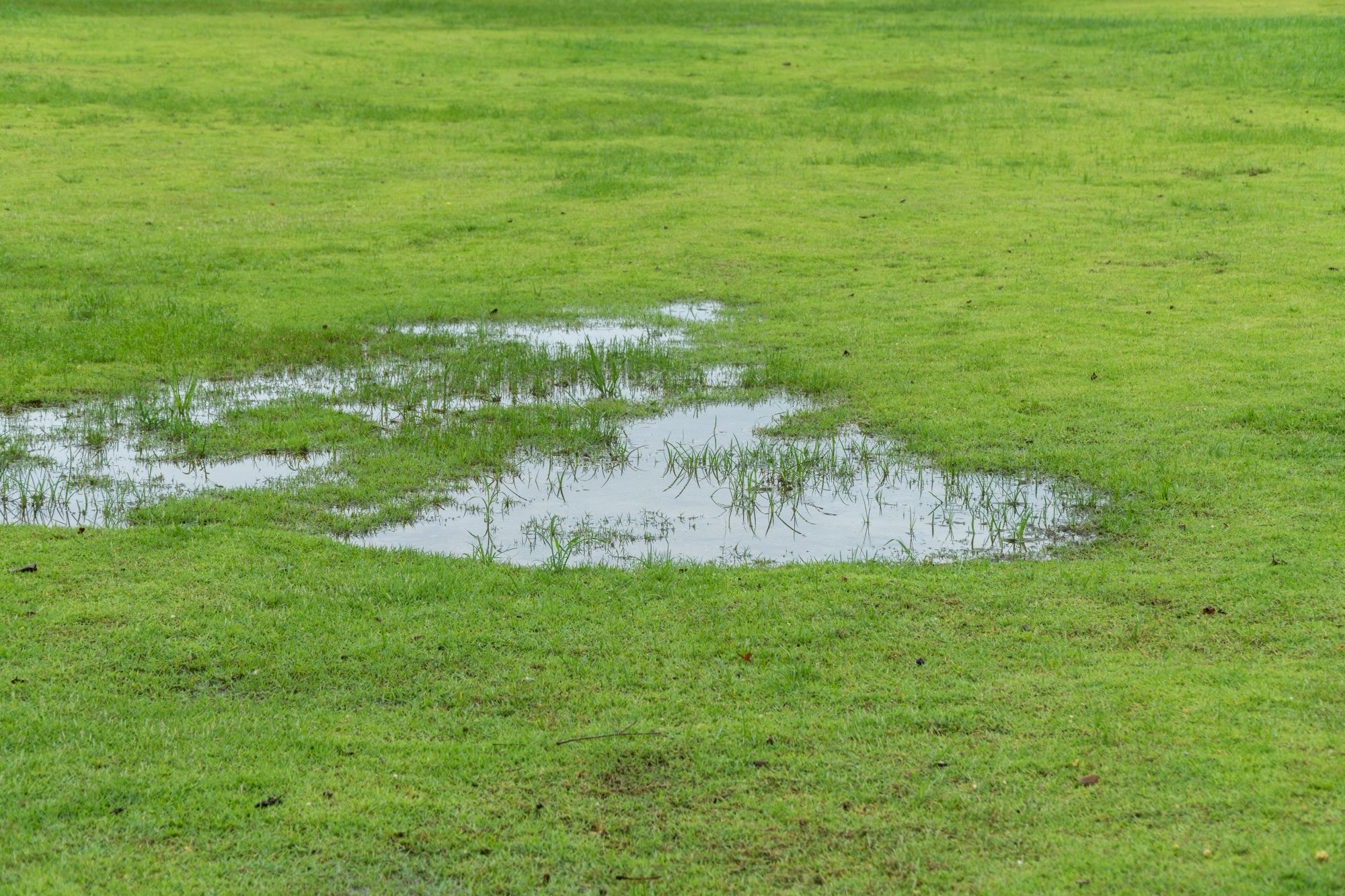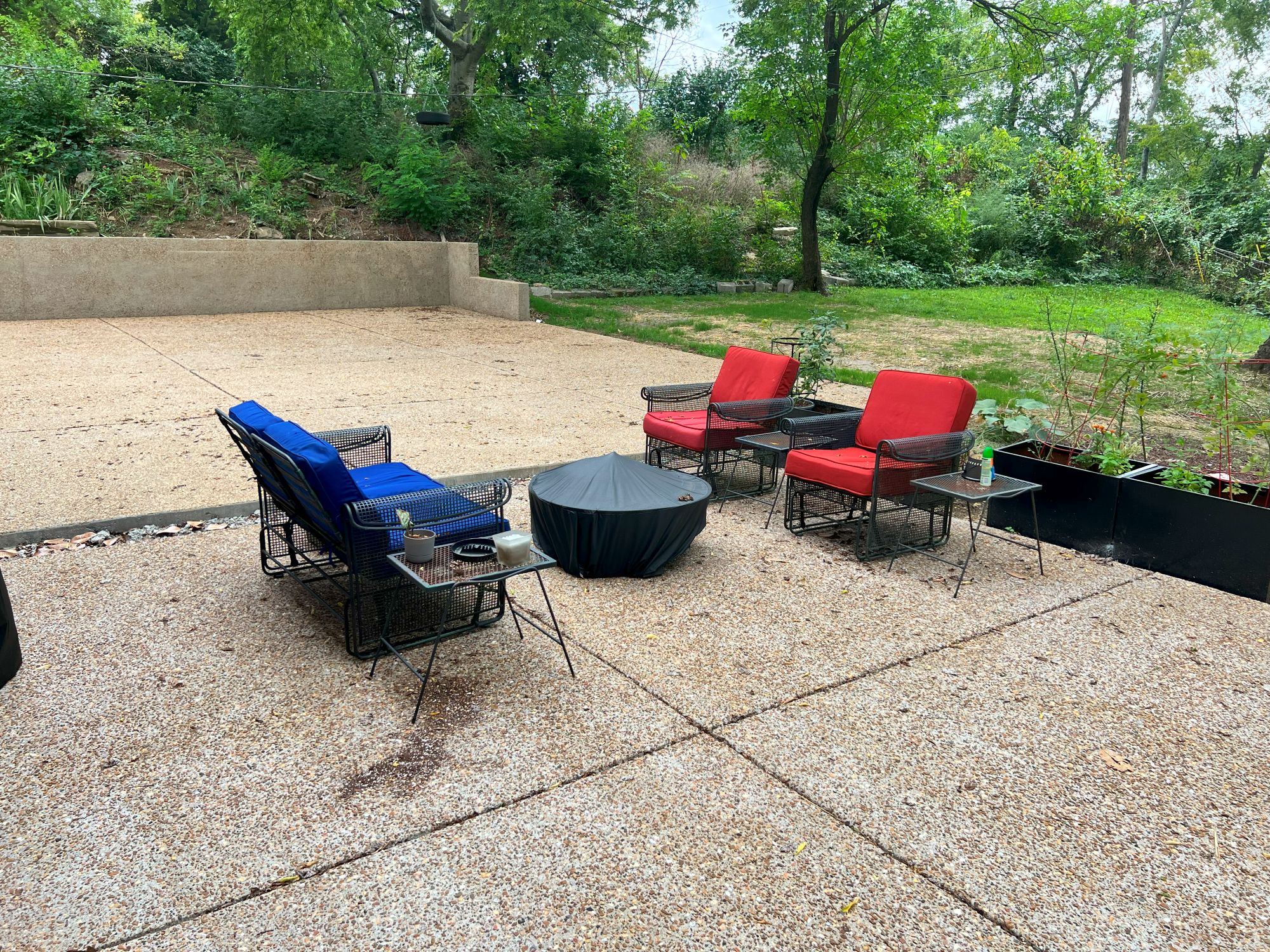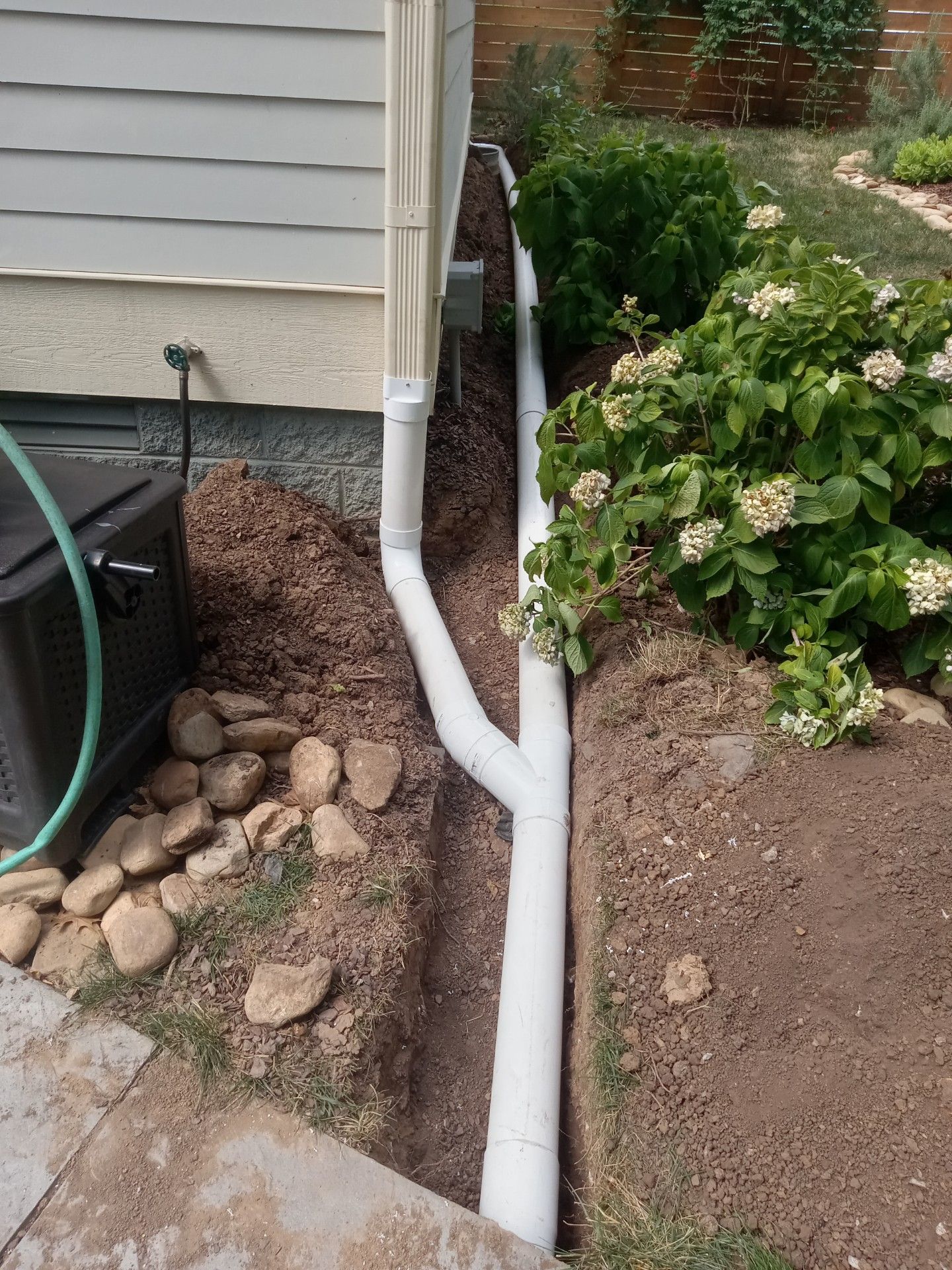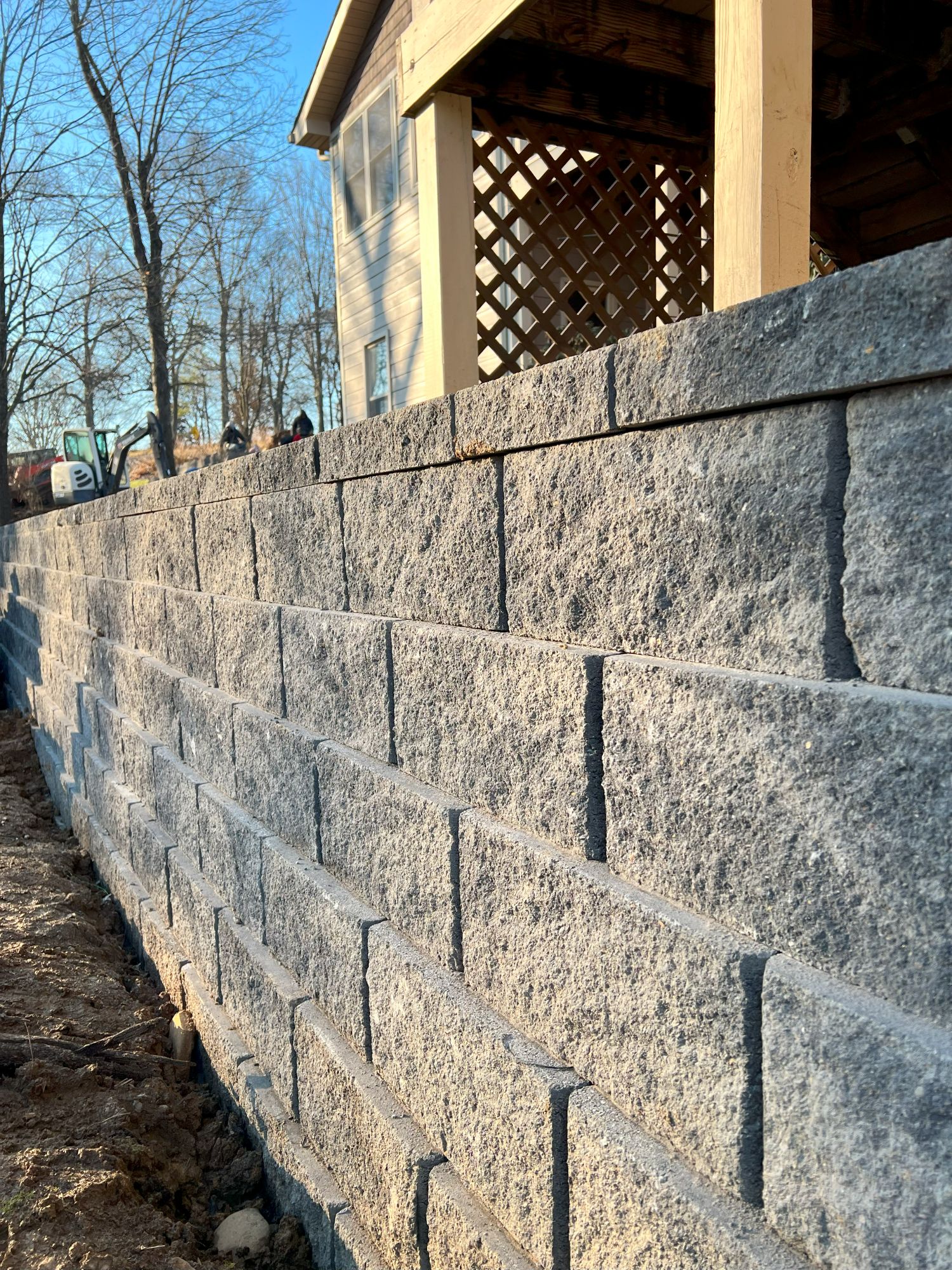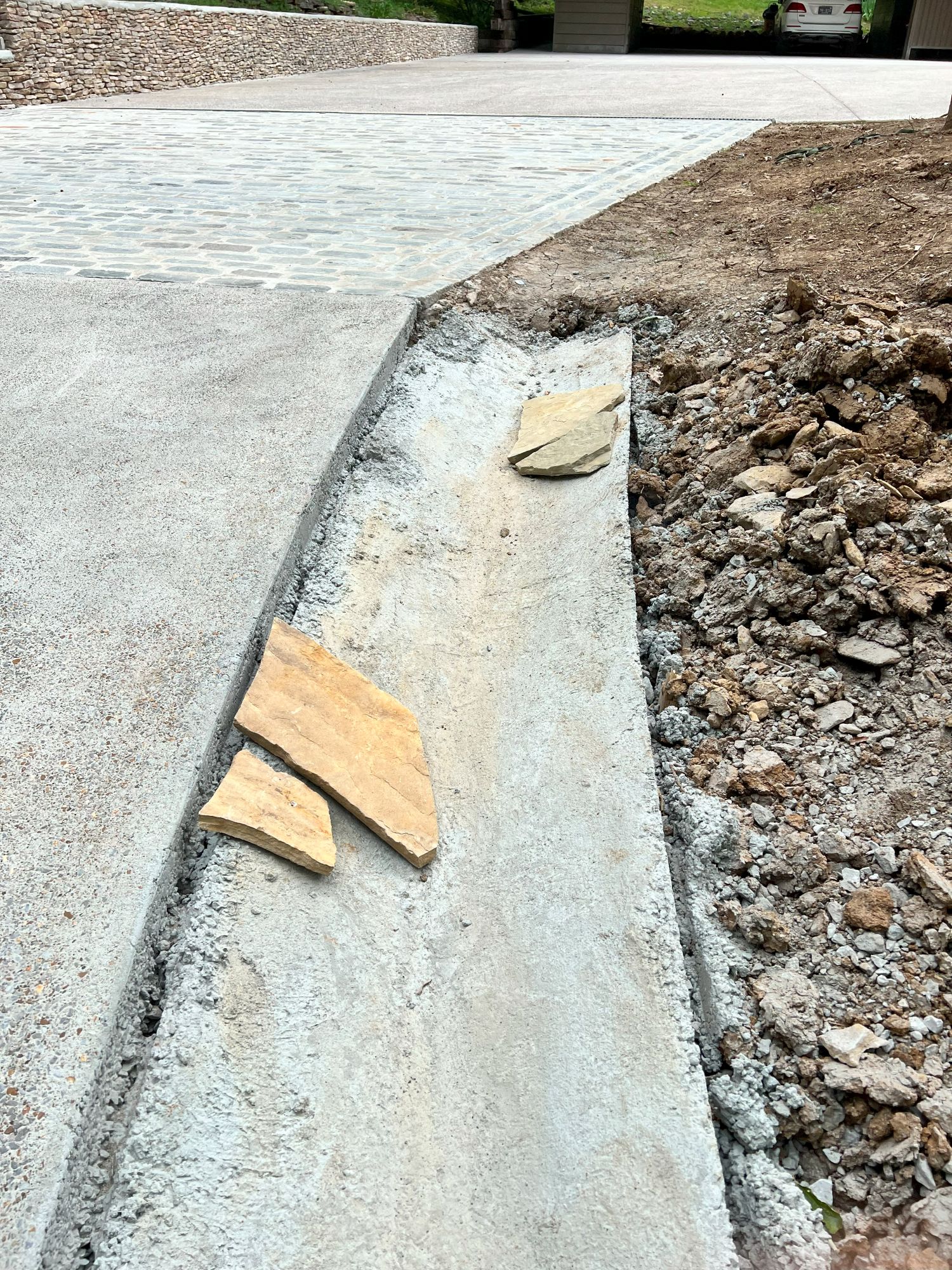As autumn paints the landscape with vibrant hues of red, orange, and yellow, there’s an undeniable charm in watching leaves cover the ground. As picturesque as this season may be, it’s essential to consider how fallen leaves impact the drainage in your yard. Neglecting this can lead to water-related issues that jeopardize the health of your grass, plants, and hardscaping features. While clearing up leaves can be a hassle, it will be well worth the work!
Do Leaves Help With Drainage?
Unfortunately, while falling leaves are a natural cycle of the seasons, this yearly occurrence is a problem for yard drainage. Autumn foliage can wreak havoc on your property in several ways:
1. Clogged Drains and Gutters
One of the most common problems caused by fallen leaves is drains and gutters being blocked. When leaves accumulate in your gutters and downspouts, they hinder the flow of rainwater. This can lead to water overflow, which in turn can damage your roof, siding, and even your foundation. Additionally, when gutters become clogged, water can spill over the edges and collect in areas where it’s not supposed to, causing puddles and erosion.
2. Water Pooling
Once leaves find their way to the ground, they don’t stop causing problems. They can accumulate in low-lying areas of your yard, creating a barrier that prevents rainwater from properly draining away. This results in the formation of puddles and standing water, which can turn your yard into a soggy mess. Besides being unsightly, water pooling can create an unhealthy environment for your grass and plants. It can suffocate the roots, promote mold and mildew growth, and create costly damage.
3. Damage to Hardscaping Materials
Hardscaping features like brick pavers, gravel pathways, and stone patios are particularly susceptible to the detrimental effects of fallen leaves. Leaves can accumulate between pavers or stones, promoting the growth of weeds and moss. Over time, this can cause the hardscaping material to shift or become uneven, leading to a potentially hazardous walking surface. Depending on the debris and surface, unsightly stains can also be left behind.
Can Leaves Clog Storm Drains?
Not only do leaves impact drainage on your own property, but those that wash away toward storm drains also pose problems. Any leaves that follow the flow of water can land in a drain, where they get caught at the edge and build up. This creates blockages, leading to water backup that fosters huge puddles on roads, sidewalks, and other surfaces. Any leaves that make it into the storm drain can cause blockages further along and lead to long-term stormwater issues, especially when there’s heavy rainfall.
Materials Prone to Leaf Buildup
If your yard has been enhanced with a patio or walkway, those features may create accumulation spots for leaves since some hardscaping materials are prone to catching them. These areas may require additional attention to detail to fully clean away debris. Here are a few examples:
- Brick Pavers: The small gaps between brick pavers are perfect traps for fallen leaves. As leaves accumulate, they break down and can become compacted, making them even harder to remove.
- Gravel: Gravel paths and driveways are aesthetically pleasing but can quickly become overwhelmed by leaf debris. Leaves can bury themselves in the gravel, making it challenging to clear them out effectively.
- Stone Patios: Stone patios with irregular shapes and crevices are susceptible to leaf accumulation. Leaves can lodge themselves between the stones, making them difficult to clean thoroughly.
“Work with skilled Nashville hardscaping and outdoor construction professionals who understand your vision and respect your schedule. Contact us for a free quote!”
Reducing Leaf Debris in Your Yard
Now that we’ve discussed the problems caused by fallen leaves, let’s explore some strategies to mitigate these issues and maintain proper drainage in your yard:
- Regular Gutter Cleaning: To prevent clogged gutters and downspouts, schedule regular cleaning during the fall season. You can do this yourself using a ladder and gloves or hire a professional service. Regular cleaning helps keep your gutters in good condition. Installing gutter guards can also help keep leaves out of your gutters in the first place.
- Leaf Blowing and Raking: Invest in a leaf blower or rake to regularly clear your yard of fallen leaves. Doing this every week or two helps prevent leaves from accumulating in low-lying areas and blocking landscape drainage. You can also hire a service to do this if time or physical ability limits you.
- Composting: Instead of bagging and disposing of your fallen leaves, consider composting them. Leaves make excellent compost material and can be used to enrich your garden soil. Be sure to check on the correct process for composting and whether there are any rules around it in your neighborhood or county.
- Mulching: Another option is to use a mulching lawnmower if you have a larger property. This equipment shreds leaves into smaller pieces, which can serve as natural mulch for your garden beds. This helps improve soil quality and reduces the need for disposal.
Safely Disposing of Leaves
Raking or blowing leaves into a pile gets them away from drains and pipes, but if you don’t get rid of them, then they end up back where they started. Disposing of leaves takes them out of the area, so wind and rain can’t undo your work. When disposing of leaves, it’s crucial to do so in an environmentally friendly and responsible manner. Here are some tips to help:
- Bagging: If you choose to bag your leaves, use biodegradable bags whenever possible. This reduces the environmental impact and makes it easier for leaves to break down naturally. Removing leaves from the area minimizes their potential for blocking landscaping drainage.
- Composting: Composting leaves is an eco-friendly option that gives you long-term returns. Mixing the leaves with other compostable materials helps create nutrient-rich compost for your garden, which will be handy come spring.
- Local Recycling Programs: Check if your local municipality offers leaf recycling programs. Many communities collect leaves to create mulch or compost for public use. Reach out to your city or county to see what the process is, whether there is any cost, or if any specific requirements are in place for your leaves to be picked up.
- Professional Removal: If you have a large volume of leaves or yard waste, consider hiring a professional removal service that specializes in environmentally responsible disposal. They’ll have the experience and equipment to get rid of the leaves quickly and efficiently!
If your landscape drainage solutions still don’t seem to be working even after taking care of your leaves, it may be time to have a professional review your existing setup. Old or incorrectly installed drains, retaining walls, and other drainage solutions may not be optimized for your property. If they were set up decades ago, the materials may need to be updated. Experienced professionals from Greenway of Nashville can provide a free consultation to evaluate your current drainage situation and give you a guaranteed quote for the perfect solution.
A well-maintained yard not only looks great but also functions optimally, providing you and your family with a comfortable and safe outdoor space. Embrace the season and make sure your yard is leaf-free and ready to thrive.
Get your yard draining right with a free consultation with our drainage experts. Submit a form on our website or call us at (615) 238-4574.
Read more content related to:
